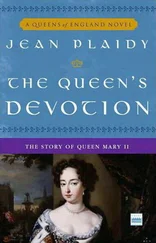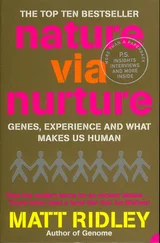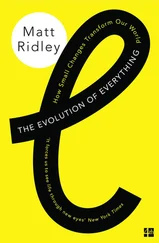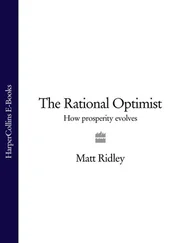The Queen - Matt Ridley
Здесь есть возможность читать онлайн «The Queen - Matt Ridley» весь текст электронной книги совершенно бесплатно (целиком полную версию без сокращений). В некоторых случаях можно слушать аудио, скачать через торрент в формате fb2 и присутствует краткое содержание. Жанр: Старинная литература, на английском языке. Описание произведения, (предисловие) а так же отзывы посетителей доступны на портале библиотеки ЛибКат.
- Название:Matt Ridley
- Автор:
- Жанр:
- Год:неизвестен
- ISBN:нет данных
- Рейтинг книги:4 / 5. Голосов: 1
-
Избранное:Добавить в избранное
- Отзывы:
-
Ваша оценка:
- 80
- 1
- 2
- 3
- 4
- 5
Matt Ridley: краткое содержание, описание и аннотация
Предлагаем к чтению аннотацию, описание, краткое содержание или предисловие (зависит от того, что написал сам автор книги «Matt Ridley»). Если вы не нашли необходимую информацию о книге — напишите в комментариях, мы постараемся отыскать её.
Matt Ridley — читать онлайн бесплатно полную книгу (весь текст) целиком
Ниже представлен текст книги, разбитый по страницам. Система сохранения места последней прочитанной страницы, позволяет с удобством читать онлайн бесплатно книгу «Matt Ridley», без необходимости каждый раз заново искать на чём Вы остановились. Поставьте закладку, и сможете в любой момент перейти на страницу, на которой закончили чтение.
Интервал:
Закладка:
The trouble is, I am not sure what to suggest in place of it.
Suppose it is true that in the days of Rubens men preferred plump women and that today they prefer thin women: Suppose between the plump matrons of Rubens 's paintings and the " no woman can be too thin " days of Wallis Simpson, men stopped preferring the fattest or some half-plump ideal and started preferring the thinnest women available. Ronald Fisher 's sexual selection theory suggests one way in which it may have been adaptive for men to like thin women. By preferring a thin female, a human male may have had thin daughters who would have attracted the attention of high-status males because other males also preferred thinness. In other words, even if a thin wife could bear fewer children than a fat one, her daughters would be more likely to marry well, and having married well, to be wealthy enough to rear more of the children they bore. So the man who marries a thin woman may have more grandchildren than the man who marries a fat one. Now imagine that a cultural sexual preference spreads by imitation and that young men learn the equation thin equals beautiful by watching others behave.
That in itself would be adaptive because it would be one way for males to ensure that they did not flout the prevailing fashion (just as females copying each other in mate choice is adaptive in black grouse). Were they to ignore the cultural preference for plump or THE USES OF BEAUTY
:::291 :::
for thin women, they would risk having spinster daughters as surely as a peahen would risk having bachelor sons by choosing a short-tailed mate. In other words, as long as the preference is cultural and the preferred trait is genetic, Fisher 's insight that fashion is despotic still stands."
I confess, however, that these ideas do not really convince me. If fashions are despotic, they cannot easily be changed. The puzzle is how men stopped liking plump women without depriving themselves of eligible offspring by doing so. It is hard to escape the conclusion that the fashion in men 's preferences for women 's fatness cannot have changed adaptively. Either men ' s preferences shifted spontaneously and for no good reason or men always preferred some ideal shape that was always quite thin: WHY WAISTS MATTER
The solution to this puzzle may lie in the work of an ingenious Indian psychologist named Dev Singh, who now works at the University of Texas in Austin. He observed that women's bodies, unlike men's, go through two remarkable transitions between puberty and middle age: At ten a girl has a figure not unlike what she will have at forty. Then suddenly her vital statistics are transformed: The ratio of her waist to her chest measurement and to her hips shrinks rapidly. By thirty it is rising again as her breasts lose their firmness and her waist its narrowness. That ratio, of waist to breasts and hips, is not only known as the vital statistic but it is also the feature that, with a few brief exceptions, fashion has always emphasized above all else. Bodices, corsets, hoops, bustles, and crinolines existed to make waists look smaller relative to bosom and bottom.
Bras, breast implants, shoulder pads (which make the waist look smaller), and tight belts do the same today.
Singh noticed that however much the weight of Playboy centerfolds changed, one feature did not: the ratio of their waist width to their hip width. Recall that Bobbi Low at the University of Michigan argued that fat on the buttocks and breasts mimics broad hip
::: 292:::
The Red Queen
bones and high mammary tissue content, while thin waists seem to indicate that these features could not be caused by fat: Singh 's theory is slightly different but intriguingly parallel. He argues that, within reason, a man will find almost any weight of a woman attractive as long as her waist is much thinner than her hips. 18
If that sounds foolish, consider the results of Singh 's experiments. First, he showed' men four versions of the same picture of the midriff of a young woman in shorts. Each picture was subtly touched up to alter slightly the waist-to-hip ratio: 0:6, 0.7, 0:8, and 0:9. Unerringly, men chose the thinnest-waist version as the most attractive: This was no great surprise, but he found a remarkable consistency among his subjects: Next he showed his subjects a range of drawings of female forms, which varied according to their weight and according to their waist-to-hip ratio: He found that a heavy woman with a low ratio of waist to hips was usually preferred to a thin woman with a high ratio. The ideal figure was the one with the lowest ratio, not the one with the thinnest torso.
Singh ' s interest is in anorexics, bulimics, and women obsessed with losing weight even when thin: He believes that because dieting in fairly thin women has no effect on the waist-to-hip ratio—if anything, it makes it larger by shrinking the hips—
they are doomed never to feel more attractive.
Why does the waist-to-hip ratio matter? Singh observes that a "gynoid" fat distribution—more fat on the hips, less on the torso—is necessary for the hormonal changes associated with female fertility: An " android " fat distribution—fat on the belly, thin hips—is associated with the symptoms of male disabilities such as heart disease, even in women. But which is cause and which effect? It seems to me more likely that both the shape and the hormonal effects of it are sexually selected by generations of males rather than males preferring the shape because it is the only way the hormones can be made to work. The relatively brief period during which women have hourglass bodies—from fifteen to thirty-five, say—is a sexually selected phenomenon: It owes more to competition to attract men than to any other biological need. Men have been unconsciously acting as selective breeders of women.
THE USES OF BEAUTY
:::293
Low provides one possible reason for the male preference for a low ratio—choosing broad-hipped women more able to give birth: Most apes give birth to babies whose brain is half-grown; human babies' brains are one-third grown at birth, and they spend far less time in the womb than is normal for a mammal, given the longevity of man: The reason is obvious: Were the hole in the pelvis through which we are born (the birth canal) commensurately larger, our mothers would be unable to walk at all: The width of human hips reached a certain point and could go no further; as brains continued to grow bigger, earlier birth was the only option left to the species: Imagine the evolutionary pressure of this process on female hip size. It was always wise for a man to choose the biggest-hipped woman he could find, generation after generation, for millions of years. At a certain point hips could get no bigger but men still had the preference, so women with slender waists who appeared to have larger hips by contrast were preferred instead:'
I do not know if I believe this tale or not: I cannot find the logical flaw in it (though on first reading there will seem to be many), nor can I quite match it to the male passion for thinness: I also have a nagging doubt about our assumptions that fashions have changed in the admiration of thinness: Suppose our assumptions are at fault, as in the story of the king and the goldfish: Suppose men always preferred slim women to fat ones because slimness meant youth and virginity. After all, as every cosmetic company and plastic surgeon knows, youth has always been the most reliable key to beauty. Perhaps men do not use slimness as a clue to status or childbearing ability but to youth.
YOUTH EQUALS BEAUTY?
A man cannot tell the age of a woman directly: He must infer it from her physical appearance, her behavior, and her reputation: It is intriguing to note that many of the most noticed features of female beauty decay rapidly with age: unblemished skin, full lips, clear eyes,
Читать дальшеИнтервал:
Закладка:
Похожие книги на «Matt Ridley»
Представляем Вашему вниманию похожие книги на «Matt Ridley» списком для выбора. Мы отобрали схожую по названию и смыслу литературу в надежде предоставить читателям больше вариантов отыскать новые, интересные, ещё непрочитанные произведения.
Обсуждение, отзывы о книге «Matt Ridley» и просто собственные мнения читателей. Оставьте ваши комментарии, напишите, что Вы думаете о произведении, его смысле или главных героях. Укажите что конкретно понравилось, а что нет, и почему Вы так считаете.












